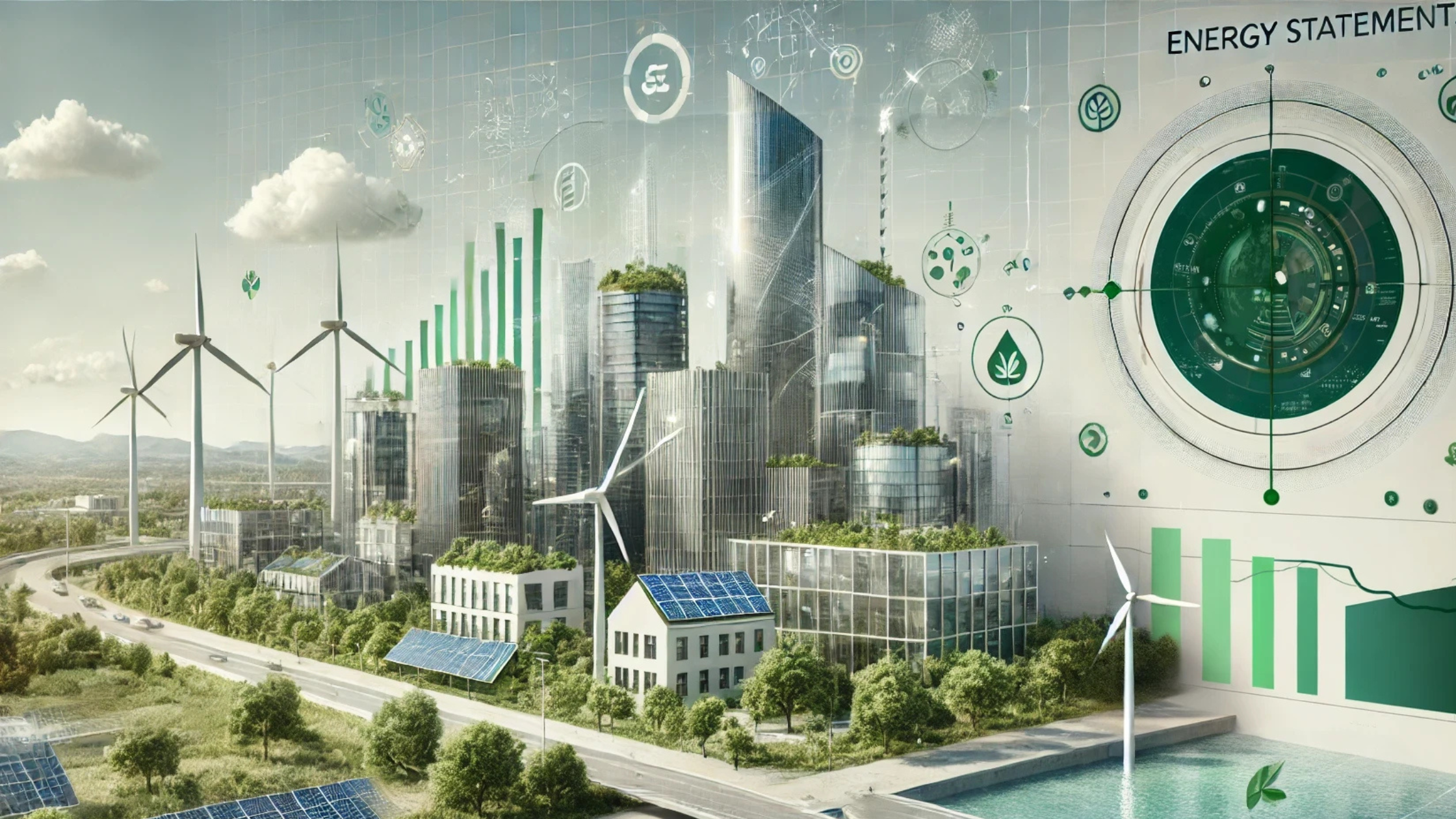When you’re starting a new building project, one of the key requirements is to have an energy statement. This document plays a key role in demonstrating how your development will meet energy standards and contribute to sustainability goals. Whether you’re developing residential or commercial properties, understanding what an energy statement entails and why it’s essential can make a significant impact on your project’s success.
What is an Energy Statement?
There are various things to think about when you’re working on a building project, one of which is an energy statement. An energy statement is a legal document that’s required for building projects, and it’s to demonstrate your compliance with energy policies and sustainability goals. It determines how the property will achieve a reduction in CO2 emissions, beyond the standard building regulations requirements.
The extent of this reduction depends on the Local Planning Authority, with most authorities outside of London requiring a 10%, 15% or 19% reduction. In London, however, targets are a lot stricter, with any major developments falling under the Greater London Authority requiring a ‘Zero Carbon’ status, in line with the Mayor of London’s development strategy – The London Plan. This means demonstrating a CO2 emissions reduction of 35%, with remaining CO2 emissions set off through cash in lieu payments.
The Importance of an Energy Statement
An energy statement is a key part of securing planning approval and keeping a project moving forward. It’s a way of proving that the project will be energy-efficient and how renewable energy, efficient heating and lighting, and proper ventilation will be used. It also identifies the most cost-effective ways of reducing the building’s carbon footprint. By submitting an energy statement, you can showcase your commitment to meeting regulatory and Local Planning Authority requirements.
An energy statement isn’t something that should be overlooked, regardless of the type of development you’re planning, as failing to provide one can have significant consequences. Without an energy statement, securing planning permission from the Local Planning Authority can be difficult. Authorities require an energy statement to ensure that the project aligns with local energy efficiency and sustainability goals and if you don’t submit one, you’re likely to run into delays.
What Does an Energy Statement Detail?
There’s a lot that goes into an energy statement, and yours will include a breakdown of multiple energy assessments, including:
- Carbon Emission Reduction Targets – An energy statement outlines the required CO2 reduction set by the Local Planning Authority, and how the development can achieve this.
- Energy Efficiency Measures – Details on how the building will incorporate cost-effective solutions to lower energy consumption – such as insulation, efficient heating and LED lighting – will be included.
- Renewable Energy Integration – If necessary, the energy statement will specify the use of solar panels, heat pumps or other renewable technologies needed to meet sustainability targets.
- Ventilation and Heating Systems – It will include an explanation of how proper ventilation, energy-efficient boilers and heat recovery systems will contribute to reducing emissions.
- Compliance with Local Energy Policies – The document will also demonstrate that the project aligns with local sustainability requirements, ensuring planning approval.
It’s important to remember that leaving an energy statement until the last minute can lead to unexpected costs. Addressing energy efficiency measures at the design stage gives you time to plan for cost-effective solutions that will reduce carbon emissions. Making these decisions later in the process can lead to expensive changes at the last minute, which could have been avoided if you had an energy statement.
Why You Need an Energy Statement
- Mandatory for Planning Approval – Local Planning Authorities require an energy statement as part of a planning application. Without one, your project could be delayed or rejected altogether.
- Supports Government CO2 Reduction Targets – Energy Statements were introduced to help reduce CO2 emissions from new buildings, contributing to legally required climate goals.
- Essential in Highly Polluted Areas – In busy, bustling cities like London, where sustainability is a priority, energy statements align with The London Plan, a strategy focused on reducing carbon emissions in urban areas.
- Compliant with Local Policies – Each Local Planning Authority has specific energy efficiency and sustainability policies, and an energy statement proves that your project meets these requirements.
- Encourages Energy-Efficient Design – An energy statement helps to identify cost-effective solutions for reducing energy consumption, such as improved insulation and efficient heating.
- Promotes Renewable Energy Use – An energy statement often outlines how technologies like solar panels, heat pumps or wind energy will be integrated into the project.
What Happens if Carbon Emission Reduction Targets Aren’t Met?
The goal is to achieve the required carbon emissions reduction through energy regeneration using low or zero-carbon technologies within the property. However, if it’s not possible to meet the full target on-site, the remaining carbon reduction obligation can be addressed through lieu payments to the Local Planning Authority. This payment is then used to fund local regeneration projects aimed at reducing emissions elsewhere in the community. In most London boroughs, the payment is set at £60 per tonne of CO2 for a period of 30 years, which works out to £1,800 per tonne of CO2. This approach allows you to contribute to overall sustainability efforts, even if your project can’t meet the target directly.
By addressing energy efficiency early in the design process, you can avoid delays, minimise costs, and ensure that your project aligns with both regulatory requirements and environmental standards. At JosTec, we specialise in providing detailed and tailored energy statements to help you achieve compliance and support a more sustainable future. Get in touch today to find out more.



